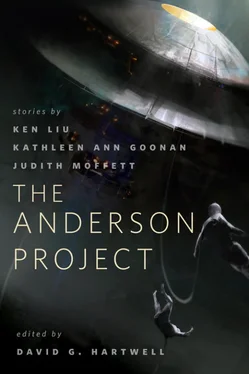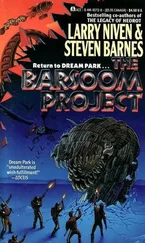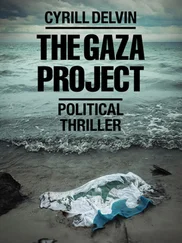She also pointed out that if by chance precognitive dreaming were possible, and were understood, it could be an invaluable tool for preventing or mitigating the impact of disasters. “If I learned one thing from Rupert,” she said, “it was not to assume that something wasn’t real or true because it can’t be quantified or replicated on demand. Does anyone seriously claim that emotions aren’t real?” She let that sink in. “Lincoln dreamed his own death just before his assassination. He mentioned the dream to several people. If Booth and Ford’s Theatre had never happened, you could argue that the dream meant something else, or nothing. But they did happen.”
The interview was given enormous media coverage. Scientists were hauled before cameras to defend their previous statements comparing precognitive dreams to reading tea leaves. The public began to insist that dreams about the assassination be explored more systematically and respectfully. Newly sworn-in President Sunderlin instructed the FBI to get to the bottom of the dream reports, to settle questions of authenticity and make a recommendation.
The report eventually turned in, which ran to thousands of pages, stated that while not all the dreamers could provide bona fides, and some were cranks and kooks of a kind familiar to investigators, at least two-thirds of the reports had been filed by people long committed to taking their dreams very seriously indeed. Several thousand people allowed the federal agents to look through detailed private records, often going back many years, in which dreams were described, dated, given titles, and written out by hand as recommended by their instructors and gurus. Besides those linked to the assassination, their logs documented any number of other precognitive dreams confirmed by later experience. Most of these concerned personal matters, but some referred to significant public events; the report contained photocopied excerpts of entries convincingly alluding to phenomena such as 9/11, the Boxing Day tsunami in Indonesia, the 2027 eruption of Mount Pinatubo, the nuclear strike on Jerusalem. The agents admitted that most of the people they questioned were “good witnesses,” convincing in their sincerity. The chief difficulty, they concluded, was that owing to the bizarre way in which information is presented in dreams, too often the events alluded to could be recognized only after they had occurred.
The report further acknowledged that, based on the evidence of dream logs and the testimonies of family members and friends, certain people seemed especially gifted at anticipating real-world events by dreaming about them before they happened. Bottom line: while there remained no way to prove that precognitive dreaming was genuine, the evidence that it might be was too strong to dismiss out of hand.
In view of the advantage to society of knowing in advance when something of great public import was to happen, the FBI recommended that further study be undertaken. To accomplish this, they proposed that government-funded research centers be established at one or several institutions of higher learning. Systematic programs should be set up to identify young people with unusual precognitive abilities, and ways devised to enhance those abilities through training. They recommended that government scholarships be awarded to those who qualified for the program.
The report appended an immense bibliography. The study of precognitive dreaming turned out to be not quite so arcane a field as the scientific community at large had always supposed. Researchers with impeccable credentials had been at work on the subject for a long time, some at prestigious institutions like Duke, Cornell, and the University of California. When the media tracked a few of these scientists down and asked why they had risked their careers by venturing into such a controversial field, they pointed out that quantum mechanics had made it necessary to consider time in a new way. Theoretically, they said, it’s possible that we all exist in the past, present, and future simultaneously. Precognition, in and out of dreams, was consistent with that model, not to mention even weirder phenomena, like the possibility of changing the past, and of affecting the future by intention. Sheldrake, who had said the same, turned out to be the mere tip of a small iceberg.
* * *
“Sorry I couldn’t get a reentry room, guys. I’m afraid this isn’t too comfy,” Josh said. Emily and Jen had arranged themselves on their backs widthwise across the head and foot of his single bed with their feet on the floor (Emily after carefully lifting the curtain of her sparkly hair and letting it fall over the side of the bed). Josh hung his DREAMWORK IN PROGRESS sign on his outer door, closed and locked that and the inner door, and arranged his skinny body between them but in the opposite direction, with his head next to their bent knees, to minimize crowding.
“You can never get a reentry room at the last minute. I’ve tried,” Emily said. The reentry rooms had plenty of padded floor space. She wriggled a little. “This’ll be okay for a while but my back’s going to start hurting if I stay here very long.”
“Yeah, okay. Sorry. We can start right now. Okay: we’re going to go back into my dream titled ‘Space Ballet’ to find out three things: whether we’re out in space or underwater, what the Lego shuttle is, and why I’m so scared of it.”
“What’s your intention?” Jen asked him. The students had been taught to state both what they wanted to find out and what action they intended to take when they reemerged from the dream.
“I don’t think I’m going to have an intention till I find out why it scares me. But okay, I’ll say I intend to do whatever I think I should once I know what I’m dealing with. How’s that?”
Jen snorted. “What do you want us to do?”
“I guess,” Josh said slowly, “just help me determine where we are, and also stand guard and help fight off the shuttle if you think I might be in trouble.”
“I accept the mission,” Jen said; then Emily said it too.
Josh slid his hands sideways on his bedspread till they were just touching the hands of his trackers. Arranged this way, his power animal, a coyote, nudged against Emily’s golden jackrabbit. It wasn’t optimal to juxtapose a predator and a prey animal, but Jen’s prairie chicken was just as likely as a rabbit to interest his coyote, so Josh didn’t ask them to switch places. It shouldn’t matter that much for this exercise. He settled himself, drew a deep breath and held it. “Lights! Begin!”
The room immediately went dark, and was filled with the sound of drumming.
Josh let his mind go dark as well, and slowed and regulated his breathing. On either side of him, he knew, his two trackers were doing the same. Dream reentry was something they had all learned to do as freshmen and had practiced regularly ever since. It had stopped seeming miraculous that a person could enter somebody else’s dreamscape while fully conscious, but the experience could still feel strange, and require a fair amount of energy; nobody liked to do it when very tired. Jen, and especially Emily, were both tired enough to make Josh wonder whether this was going to be a very productive session, but he also knew his painting had made things easier by showing them exactly where to go. He set his doubts aside and began to enter the deeper blackness of his dream.
He was back in the suit that fit him like a second skin, filled again with a sense of physical power and grace as he raised his arms and spun in a perfect pirouette. The ship hung above him. Nearby, Tim struck a pose and soared away. Josh couldn’t see Tim’s face, not that he needed to. Sheer joy, to be able move so beautifully! He let the feeling swell inside him for a long moment before focusing on his first question: Water or vacuum? The answer wouldn’t come clear. His ballet moves required resistance, and he felt resistance, but the medium he floated in didn’t seem to be water. Or not only water. Water and something else at the same time. The suit was both a wet suit and something else—yes, a pressure suit designed for space walks, as he had assumed. The situation, thus examined, revealed not an answer but an ambiguity.
Читать дальше












